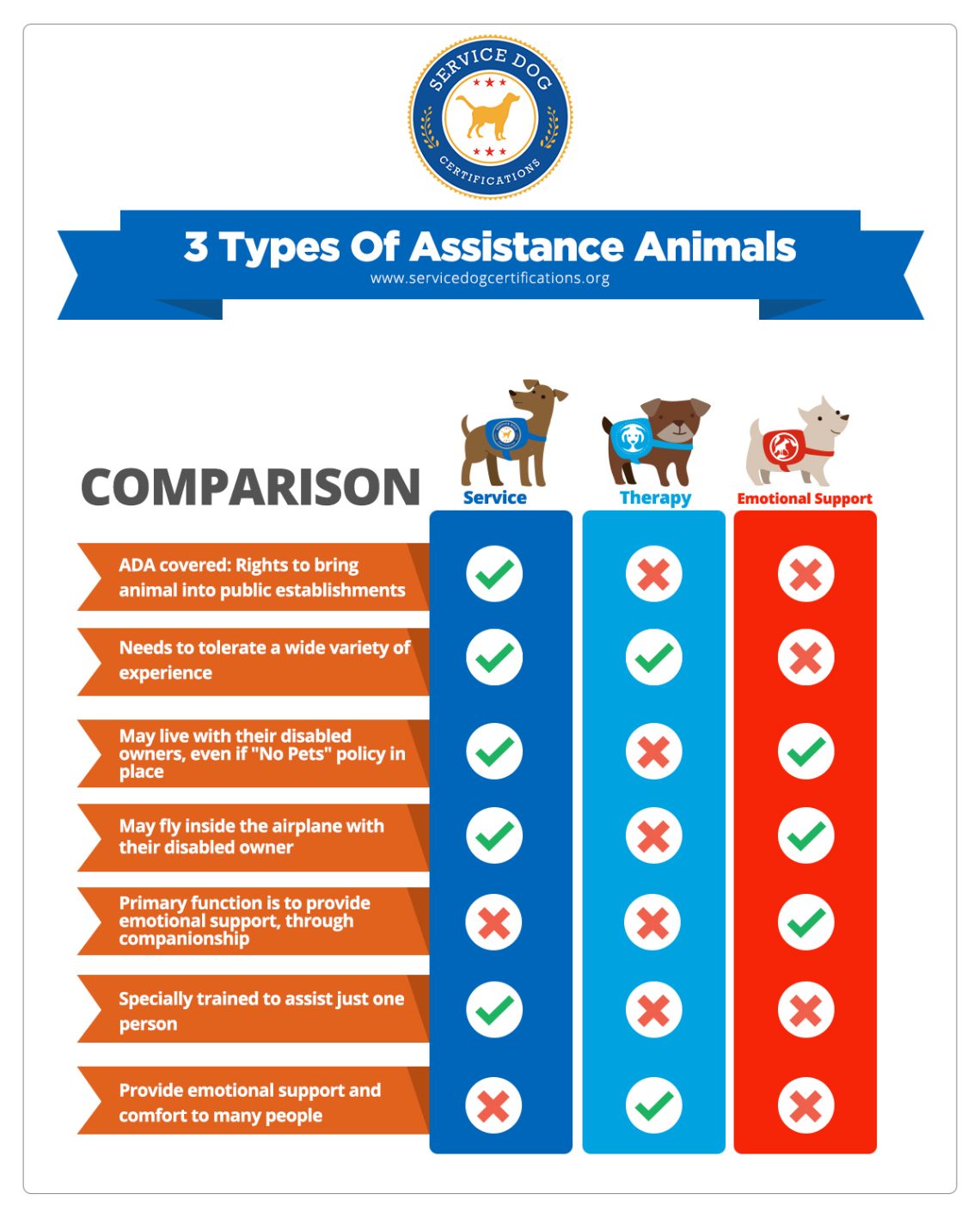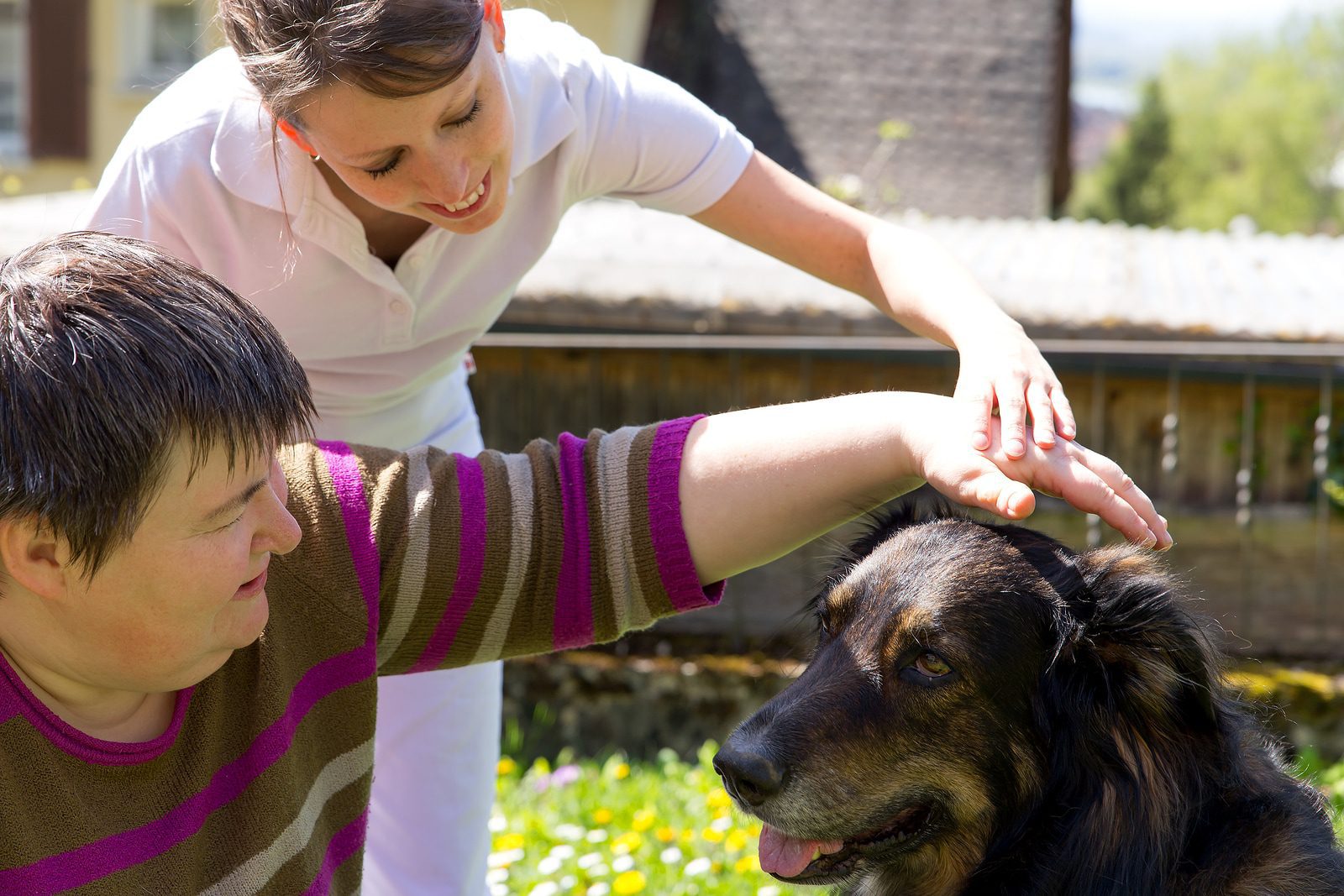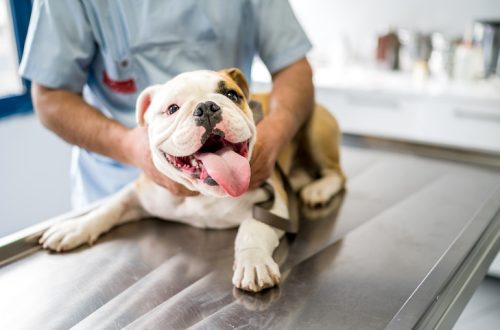
Training and registration of a therapy dog
Have you ever wondered if your pet could make a good therapy dog? You may know a nursing home that your dog could bring much-needed joy to the lives of its residents, but aren’t sure how or even where to start. If you’ve ever wondered what steps you need to take to register a therapy dog or what it takes to train one, keep reading this article.
Contents
What do therapy dogs do?
 Therapy dogs, along with their handlers, visit places like schools, nursing homes and hospitals to help improve the lives of people in difficult situations. If you register a dog as a therapy dog, it can cheer up a terminally ill patient or become a friend to a lonely elderly person. Therapy dogs help children suffering from anxiety or depression by providing a calming effect. The main task of such a dog is simple – it provides communication, allows distraction and gives love to people who are faced with difficult circumstances.
Therapy dogs, along with their handlers, visit places like schools, nursing homes and hospitals to help improve the lives of people in difficult situations. If you register a dog as a therapy dog, it can cheer up a terminally ill patient or become a friend to a lonely elderly person. Therapy dogs help children suffering from anxiety or depression by providing a calming effect. The main task of such a dog is simple – it provides communication, allows distraction and gives love to people who are faced with difficult circumstances.
Therapy dog versus service dog
It is important to understand how a therapy dog differs from a service dog. Service dogs live with the people they are trained to serve and provide highly specialized services such as accompanying the blind or assisting people with disabilities. Service dogs are rigorously trained to perform their duties effectively and are allowed to be anywhere their companions are, including restaurants and airplanes. Therapy dogs, although they have special access to the premises where they are invited, do not have unlimited access like service dogs.
Therapy dog training
Since the job of therapy dogs is to spend time with those who need it, it does not require much special training. However, treatment dogs must have basic obedience skills, be very sociable, and communicate well with strangers. Some therapy dog organizations require their “students” to pass the American Kennel Club (AKC) Good Citizen exam. In some cases, these dogs will need to be desensitized to make sure they don’t freak out in situations involving loud children or hospital equipment.
Some therapy dog registration organizations provide training courses to those who need them, but this is quite rare. You may need to take care of the training of the service dog yourself or enroll it in separate courses. Listed below are the training courses your pet will likely need to take to become a therapy dog:
- Basic and intermediate obedience training.
- Training course “A dog is a conscious citizen”.
- Desensitization training, which includes training in unusual situations and loud noise environments, as well as acclimatization in hospitals and other specialized environments.
Contact the organization where you plan to register your dog for the exact requirements. They can help you find classes or a therapy dog trainer in your community.
Additional requirements for therapy dogs
Animals of any breed, shape or size can become therapeutic. In order for a dog to be registered as a therapeutic dog, it must be at least one year old. She should be friendly, confident and well-mannered and should not be aggressive, anxious, fearful or hyperactive. You must also be able to demonstrate that you or the person who will accompany the dog on visits are able to interact well with the dog.
Typically, therapy dog registration organizations have health requirements that your dog must meet. For example, Therapy Dogs International (TDI) sets the following pet health requirements:
- Your dog should have had its annual veterinary check-up no more than 12 months ago.
- She must have received all necessary rabies vaccinations as scheduled by the veterinarian.
- She should have all the basic vaccinations, including distemper, parvovirus and hepatitis.
- You must provide a negative stool test result for your dog that was taken no more than 12 months ago.
- In addition, a negative heartworm test result less than 12 months old, or evidence that the dog has been on heartworm prevention medication continuously for the past 12 months, must be provided.
How to register a therapy dog
 Before you can start using your dog as a therapy dog, you must register with a therapy dog organization, which, once registered, will provide you with facilities where you and your dog can work. Check your local listings of therapy dog registration organizations in your area, or visit the American Kennel Club (AKC) website for a list of AKC approved therapy dog organizations.
Before you can start using your dog as a therapy dog, you must register with a therapy dog organization, which, once registered, will provide you with facilities where you and your dog can work. Check your local listings of therapy dog registration organizations in your area, or visit the American Kennel Club (AKC) website for a list of AKC approved therapy dog organizations.
Once you are satisfied that your dog meets all the requirements for therapy dogs, you (or the person who will be the dog’s handler) and your dog will need to be assessed by this organization. The assessment is usually done face-to-face with a group of other potential volunteer pairs in a hospital or nursing home setting. Your pet may have to pass the following tests:
- Meeting and meeting new people.
- Execution of “sit” and “lie down” commands in group situations.
- Execution of the command “come to me”.
- Visit to the patient.
- Reaction to children and unusual situations.
- Execution of the “fu” command.
- Meeting another dog.
- Entrance to the object.
Keep in mind that it’s not just your dog that will be judged. The evaluator will be closely monitoring both how you interact with your dog and how well you get on with each other and work as a team. If the evaluator is satisfied with your work and your dog’s work, both of you can be registered as a therapy team.
If a therapy dog organization does not conduct assessments in your area, some organizations, including TDI, provide limited registration based on remote assessment. In order to be considered, you must provide certificates of completion of basic and intermediate obedience training courses, as well as a letter from the obedience school containing an assessment of your dog’s temperament. You will also need to provide a letter of recommendation from a veterinarian and a letter of authorization from the facility you wish to visit (written on that facility’s letterhead).
Although the process of training and registering a therapy dog is quite complex, it can be a rewarding experience for you and your pet, not to mention the benefits that people in need of help will get from interacting with your dog.





